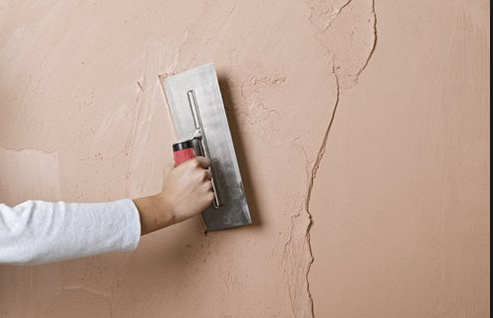Inside Plastering: Top Quality Craftsmanship for Flawless Wall Surfaces
Inside Plastering: Top Quality Craftsmanship for Flawless Wall Surfaces
Blog Article
A Comprehensive Overview to Learning Plastering Abilities for Your Improvement Demands

Important Tools and Materials
Numerous important devices serve distinctive functions, ensuring efficiency and precision throughout the plastering procedure. A high-quality trowel, for circumstances, is important for applying and smoothing plaster, while a hawk supplies a steady system for holding the material.
In addition to tools, choosing the ideal plastering products is vital. Gypsum-based plasters are frequently preferred for their flexibility and ease of use, while cement-based alternatives are perfect for exterior applications due to their resilience. Water and bonding representatives play substantial functions in accomplishing proper uniformity and attachment, ensuring that the plaster adheres efficiently to the surface.
Additionally, safety equipment such as masks, handwear covers, and goggles is necessary to secure against dust and inflammation during the application process. By assembling the ideal mix of tools and materials, plasterers can enhance their skill set and produce high-quality coatings, inevitably boosting the overall craftsmanship of their work.
Preparing Surface Areas for Smudging
Accomplishing a resilient and smooth plaster surface begins with precise prep work of the surface areas to be glued. This foundational action is crucial to making sure adhesion and the long life of the plaster. Begin by examining the problem of the substratum-- whether it is concrete, masonry, or drywall-- removing any type of loosened paint, dirt, or debris that may disrupt bonding.
Next, fix any flaws such as openings or fractures. Use a suitable filler to accomplish a level surface area; this can be essential for preventing future issues. As soon as fixed, ensure the surface is tidy and dry, as dampness can endanger plaster adherence.
For porous surfaces, it is recommended to apply a bonding representative. This product boosts attachment and creates a reliable user interface in between the plaster and substrate. If working with previously plastered surfaces, it may be required to scuff or sand the location gently to give a key for the new plaster layer.
Smudging Strategies and Tips
Grasping gluing methods calls for both ability and technique to achieve a perfect coating. One vital strategy is the application of the plaster in multiple thin layers, rather than a single thick layer. This approach permits far better bond and reduces the risk of fracturing. Begin with a base layer, ensuring it is uniformly spread and leveled with a hawk and trowel. Utilize a straightedge to check for any kind of imperfections before going on to click this link subsequent layers.
When using the surface coat, employ a troweling strategy that includes holding the trowel at a mild angle and working in a round motion. This aids to develop a smooth surface area and lowers the look of trowel marks. Additionally, maintain a spray bottle of water convenient to haze the surface area gently; this maintains the plaster convenient and permits smoother finishing.
Timing is crucial; job efficiently, as the plaster starts to establish. Once the plaster has actually tightened but is still damp, make use of a wet sponge to gently smooth the surface area even more. Last but not least, enable appropriate drying time before fining sand or painting, guaranteeing your tough job results in a professional, premium surface.
Usual Mistakes to Stay Clear Of

An additional common error is using plaster too thickly. Overzealous applications can bring about breaking and long term drying times. It's important to use plaster in slim, even layers, enabling each coat to completely dry properly before including extra.
In addition, not utilizing the right devices can hinder the top quality of the coating. Utilizing unacceptable trowels or mixers can develop incongruities in the smudging process. Always select top notch tools designed for plastering jobs.
Lastly, lots of individuals take too lightly the importance of timing. Operating in improper temperature levels or moisture levels can adversely influence plaster drying and healing. It is suggested to examine climate problems and get more adapt your routine appropriately.
Finishing Touches for a Professional Appearance
The lasts of a gluing task are important for achieving a sleek, professional appearance. As soon as the plaster has dried out sufficiently, the next action is to examine the surface for flaws. Minor bumps, holes, or uneven areas should be addressed using fine sandpaper or a sanding block. This precise attention to detail is necessary for making certain a smooth surface.
After fining sand, it's recommended to clean up the surface to eliminate any type of dust and debris. A wet cloth works for this objective, followed by a thorough drying duration. If required, applying a slim layer of finishing plaster can improve the surface area further, giving a smooth finish.
When the ending up plaster is completely dry, an additional round of sanding might be called for to achieve the desired level of smoothness. Finally, consider applying a primer prior to paint or wallpapering, click site which will boost attachment and longevity.
Final Thought
Grasping smudging skills dramatically improves the top quality of remodelling projects. A complete understanding of vital tools, surface prep work, and reliable techniques is critical for accomplishing professional results. Understanding of typical errors permits the evasion of pricey mistakes, while interest to completing touches makes sure a refined look. Inevitably, the assimilation of these components adds to the creation of smooth, long lasting surface areas that boost the aesthetic worth of any area, emphasizing the value of proficient plastering in home renovation ventures.
Water and bonding agents play substantial roles in attaining correct uniformity and bond, making certain that the plaster adheres successfully to the surface. Plastering.


In addition, maintain a spray container of water convenient to haze the surface area lightly; this maintains the plaster workable and enables for smoother completing. (Plastering)
If essential, applying a slim layer of ending up plaster can improve the surface better, giving a smooth surface.
Report this page